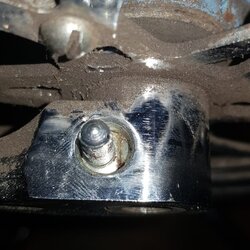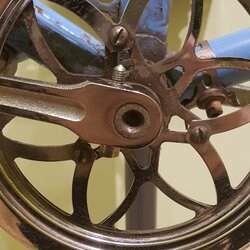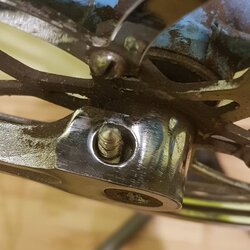Hello guys.
I recently bought an old bike with the idea in mind of fixing it and hopefully give it a second life.
The bike is from a brand called Eska, built in the non existent czechoslovakia.
The dissembling process was going good until now, when I reached a point where I really do not know what to do.
I´m trying to detached the pedal from the connecting rod. In order to do so, I have to get rid of the (Mod Edit to clarify description) cotter pin you can see in the pictures, but is not moving at all.
There's a video in Youtube where someone fixed a bike like this, but he skips this part. min 4:00.
View: https://www.youtube.com/watch?v=y8-ITTG187U
I asked him. He suggested hitting it with a hammer, but my polish is not that good and I'm afraid of breaking something.
Any suggestion?
Regards.
I recently bought an old bike with the idea in mind of fixing it and hopefully give it a second life.
The bike is from a brand called Eska, built in the non existent czechoslovakia.
The dissembling process was going good until now, when I reached a point where I really do not know what to do.
I´m trying to detached the pedal from the connecting rod. In order to do so, I have to get rid of the (Mod Edit to clarify description) cotter pin you can see in the pictures, but is not moving at all.
There's a video in Youtube where someone fixed a bike like this, but he skips this part. min 4:00.
View: https://www.youtube.com/watch?v=y8-ITTG187U
I asked him. He suggested hitting it with a hammer, but my polish is not that good and I'm afraid of breaking something.
Any suggestion?
Regards.
Attachments
Last edited by a moderator:




